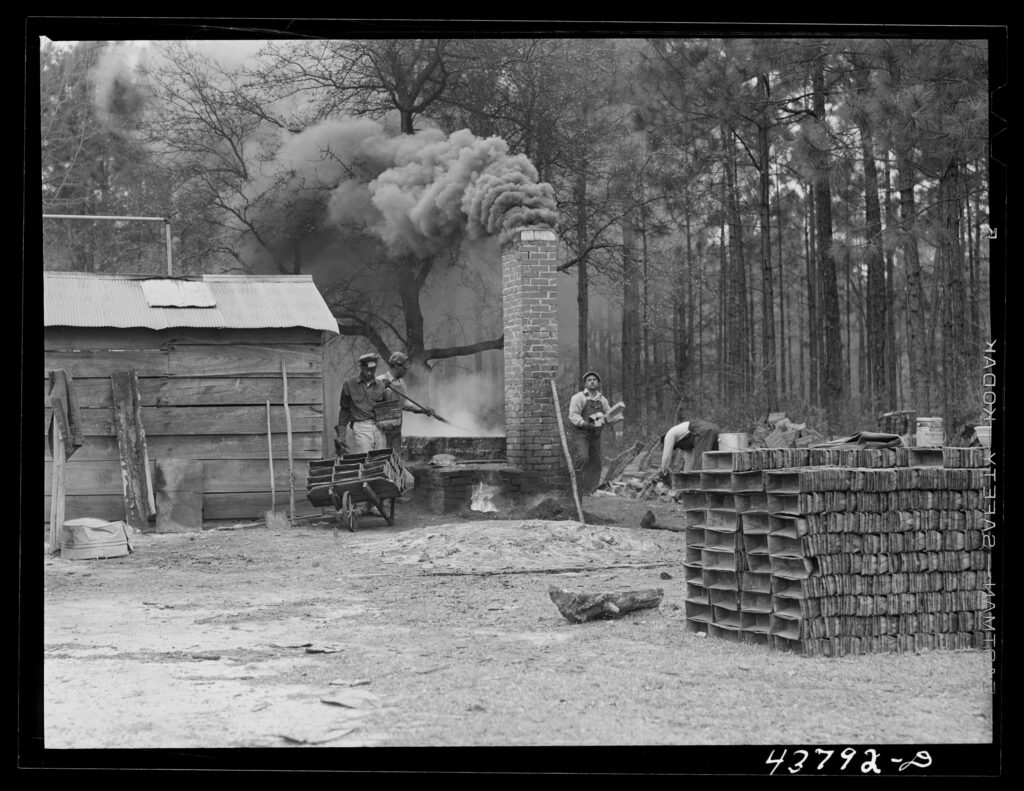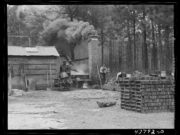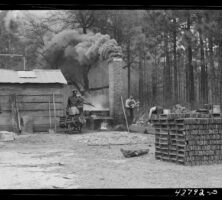Located in the northwest corner of coastal Bryan County, Pembroke has served as that county’s seat since 1937. For a number of years, its extensive timber and turpentine industries made it the commercial and social center of Bryan County.
Early History
Pembroke, named after Judge Pembroke Whitfield Williams, came into existence in 1890 because of the commercial opportunities offered by the Savannah and Western Railroad, which was built in the late 1880s. By the early twentieth century, Pembroke claimed a general store, a school, a bank, a newspaper, and Baptist, Methodist, and African Methodist Episcopal churches. In August 1905 an act of the state legislature incorporated Pembroke as a city, and by 1910 it had 467 residents.
Upper Bryan County’s timber resources—and the ability to ship them via the railroad—spurred the growth of Pembroke. Especially important was the harvesting and distillation of turpentine from the region’s pine trees. African American farmers supplementing their income performed most of the labor in the turpentine industry.

The piney lands of upper Bryan County generally followed a succession: turpentine would be harvested from the trees, which would then be harvested as timber, with the deforested land then being used for farming. The wealthy businessmen who purchased the forests of upper Bryan County for commercial use became the elite of Pembroke. Their activities shifted the commercial center of the county from the once-prosperous lower Bryan County to the Pembroke area.
Recent History
In recognition of Pembroke’s growth and new prominence in the county, the citizens of Bryan County voted in 1935 to move the county seat from Clyde to Pembroke. The move became official in 1937. By this point, however, the timber and turpentine industries that had made Pembroke prosperous had begun to wane. In 1951 the Seaboard Air Line Railway (formerly the Savannah and Western) discontinued passenger service in Pembroke.
In later years, the business elite of Pembroke focused on bringing manufacturing jobs to the city. They landed their first success when a small steel plant opened in 1968. Today the city has a small industrial park.
In the late twentieth century, as Pembroke’s growth remained relatively flat, lower Bryan County eclipsed it in terms of prosperity and growth. The construction of Interstate 95 through lower Bryan County in the 1970s allowed increasing numbers of people to work in Savannah without having to live there. This fostered the transformation of Richmond Hill—Pembroke’s lower Bryan neighbor and sometime rival—from a sleepy, small town to one of the fastest-growing cities in the state during the 1990s. Pembroke, further from the interstate, did not experience this same growth, although the city’s promoters tout it as a small town with quick and easy access to Savannah.
The population of Pembroke has remained remarkably stable. In 1960 it was 1,450. By 1990 it had grown to slightly more than 1,500, with an annexation of land bringing its population to more than 2,000 for the first time. According to the 2020 U.S. census, Pembroke’s population is 2,513.






